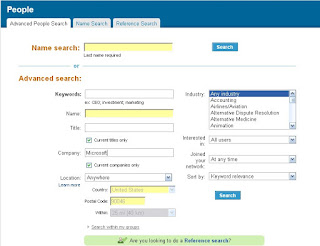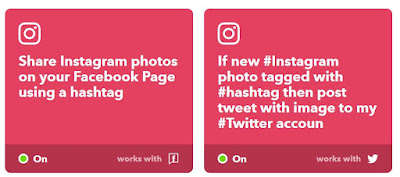How to Turn a Cold Call into a Warm Call Using LinkedIn.com
 First there was Friendster and then there was MySpace. Along the way, Plaxo leveraged its access into your Outlook contact database to launch Plaxo Pulse and Facebook hit the scene going from the college dorm to Main Street USA. In between all of this, chugging along as if it had the entire business landscape to itself, was LinkedIn.com, a site focused on just the business-to-business connections needed in the social networking world. Starting out as a more employment-oriented site, LinkedIn.com has grown in popularity over the past year to become almost the de facto Online Chamber of Commerce, allowing business people from around the world to network and connect in ways not possible just a few years back.
First there was Friendster and then there was MySpace. Along the way, Plaxo leveraged its access into your Outlook contact database to launch Plaxo Pulse and Facebook hit the scene going from the college dorm to Main Street USA. In between all of this, chugging along as if it had the entire business landscape to itself, was LinkedIn.com, a site focused on just the business-to-business connections needed in the social networking world. Starting out as a more employment-oriented site, LinkedIn.com has grown in popularity over the past year to become almost the de facto Online Chamber of Commerce, allowing business people from around the world to network and connect in ways not possible just a few years back.The simplest use of LinkedIn.com is its power in connecting with your business contacts found in your various e-mail address books, as well as connecting with those business contacts of others you've connected to in LinkedIn.com. Thus, over time, your network continues to grow and through LinkedIn.com's InMail and Invitation systems, you're able to contact more and more business professionals when seeking employment, new business and more.
The real power of LinkedIn.com, however, is in its powerful company search feature. Say you would like to target Microsoft or IBM and you're looking for someone in the marketing department. A few years back, the primary resources you would turn to were expensive business directories offered by AdWeek, RedBook and more. Today, your best first place to start when researching a target company is LinkedIn.com's company search. You would type in Microsoft as the company you were targeting, and the search results would then be sorted based upon how close they are to you (1st, 2nd and 3rd degree away from you) and by how many other contacts that individual has.
 From these search results, your research would begin. If someone is a 1st degree contact, that means they are directly contacted to you and you can reach them directly using LinkedIn.com's InMail feature. If they are a 2nd degree contact, that means there is someone (or several someones) between you and them that you share in common in your contact list. This someone makes the cold lead a bit warmer… now you actually have a relationship in common.
From these search results, your research would begin. If someone is a 1st degree contact, that means they are directly contacted to you and you can reach them directly using LinkedIn.com's InMail feature. If they are a 2nd degree contact, that means there is someone (or several someones) between you and them that you share in common in your contact list. This someone makes the cold lead a bit warmer… now you actually have a relationship in common.Out of this array of search results, you would scan the titles of the individuals found to see who is in the marketing department. You'd be surprised at the wide variety of marketing individuals you find. Your next step would be to either send that person an InMail (an upgraded, paid feature of LinkedIn.com when connecting with a 2nd or 3rd degree contact) or ask the person you share in common to introduce you to this contact. Either way, you're one step closer to making a direct connection with someone you'd like to meet to start a business relationship.
The same goes for the 3rd degree contact… as you go down the list, you can either InMail these contacts or request an introduction to them as well. Your 2nd degree contacts should be worked first, however, as the likelihood of success is higher with them. Also, as described above, the list is also sorted by those with the most contacts and works its way down. In this social business world, starting with an individual who has a lot of contacts is often your best strategy to begin with. Be wary, however, of those contacts who seem to be super power users, with many group affiliations and with their e-mail address and their number of contacts posted on their profile where their name would be. These folks are playing LinkedIn.com as a numbers game to connect with as many people as possible, and can be sometimes viewed as a new form of social networking spammers. Try to focus on the "quality" contacts and not the "quantity."
In this fast-changing environment where it seems everyone wants to be our "online friend," LinkedIn.com stands above the rest as a real testimonial to the convergence of state-of-the-art technology with the power of the online network. Used as a tool when making outreach to a company makes it second to none in its class, and with the brain power behind this organization, we can expect even greater things to come in the months ahead.
Side Bar:
 Of course all strong social networking sites have developed an equally strong GLBT presence as well. For LinkedIn.com, Dennis Velco has recently launched an incredible GLBT LinkedIn.com Group, found at http://www.linkedin.com/search?search=&groupFilter=63687 . With almost 1,000 members and growing, it is an additional tool in the company research described above, in that when a contact is found who is a member of this group, it gives you an added connection to that person, especially if you're also a member of this GLBT LinkedIn.com Group.
Of course all strong social networking sites have developed an equally strong GLBT presence as well. For LinkedIn.com, Dennis Velco has recently launched an incredible GLBT LinkedIn.com Group, found at http://www.linkedin.com/search?search=&groupFilter=63687 . With almost 1,000 members and growing, it is an additional tool in the company research described above, in that when a contact is found who is a member of this group, it gives you an added connection to that person, especially if you're also a member of this GLBT LinkedIn.com Group.As a spin-off from this LinkedIn.com Group, Dennis has also created a GLBT Group on CollectiveX.com, providing the LinkedIn.com members with additional tools from which to connect with. This group is found at http://glbt-network.collectivex.com .
Gay and Lesbian Social Networking
Advertising - Marketing - Community
For the full-color PDF version of this story, go here:
http://www.PinkBananaMedia.com/pdf/gmg2009-linkedin.pdf
To subscribe to the PBM Monthly Gay Business Report, go here:
http://www.PinkBananaMedia.com/BusinessReport/
For the annual PBM Gay Market Report, go here:
http://www.PinkBananaMedia.com/MarketReport/
NOTE: This article is part of the Gay Market Report 2009 and is FREE TO USE as long as byline above, credit, logo and link are included with story. Credit Pink Banana Media, www.PinkBananaMedia.com/MarketReport/, and please use the following logo linked below:
http://www.pinkbananamedia.com/images/pbmlogo_200.jpg



Comments